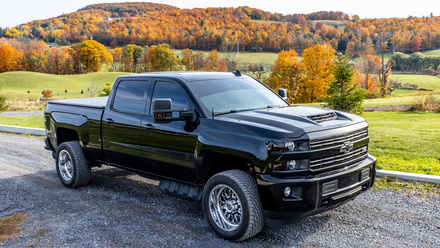Breaking into vans to steal tools is a serious issue in the UK, so how can you secure your vehicle to stop this crime?
Don’t bother with a ‘No tools left in this van’ sticker. “It’s an absolute waste of time,” says Jeff Scott, Director of van security specialists Sussex Installations. You should beef up your van’s security instead.
Firstly, know that every manufacturer’s van has a different weak spot. “Address the most common break-in methods for your model of van,” Scott explains, and install a security product to stop that type of attack. “Most commonly, this will be deadlocks for the load area.”
Newer models tend to require hook type deadlocks but, again, it depends on the model of van. “If your van has factory deadlocks – usually activated by double pressing the lock button of your remote control – make sure to activate them,” he adds. Owners of vans with keyless entry remote control should always press the lock button rather than walk away from the van waiting for the auto locking mechanism to work.
Another tip, says Scott: “Keep your keys in an RFID blocking wallet or metal biscuit tin as you do not want to fall victim to a relay type of attack.” This happens when criminals ‘hack’ the signal from the van’s key fob and enter the car without a key or breaking in. Alarms are essential but you will need to modify the manufacturer’s off ering. “Many factory-fitted alarms and aftermarket alarms do not offer any cargo area protection for high-level destruction attacks such as door folding – peel and steal – or ‘large hole in the body’ type of attacks,” Scott warns.
So fit an alarm with cargo area protection. Add a passive infrared (PIR) detector and side-door, high-position switches to the factory alarm as standard door switches are usually too low so the alarm won’t always detect a break-in without added security. The reality is that tenacious thieves tend to tamper with even the best van security. The broader issue, says Denise Brett, Director at ToolWatch, is a lack of traceability of tools. Her company’s app helps tradespeople register their tools in a database that is then shared with the police. Brett explains: “Time and time again, police officers have said they have made stops and found tools that they believe to be stolen but there is no evidence. It may be marked but there is neither the time nor the resources to track down the owners.”
Brett’s partner Alan, a former builder, lost £8,000 of tools to theft and, because he had never compiled a list of all his equipment – serial numbers, receipts or even colour – retrieval through the police was an insurmountable challenge. Technology is the solution, Brett says. “Our purpose is to prevent breakins by making tools traceable and giving police evidence to close in on those selling stolen tools. If tradespeople are not made aware of the need for a simple housekeeping registering resource then the police have nothing to look for.”
Best practice in van security
- Secure van windows with grills or medium-thickness plywood or MDF;
- Fit a full bulkhead to separate the cab from the load area;
- Install an anti-theft product: OBD port protector, immobiliser or tracker;
- Fit a tool safe; and, of course, Don’t leave anything of value on display.
Try to park...
- Near CCTV coverage; In a well-lit area;
- Close to your house or site;
- Where your van is visible to others such as neighbours;
- With your side load door and rear doors against a wall; and
- In a garage or driveway.
Don’t forget to insure your vehicle with Van and Fleet Insurance from FMB Insurance.
This article was originally published in the April / May 2021 edition of the Master Builder magazine. Members can login to view a copy, non-members can request the latest copy of the magazine.






